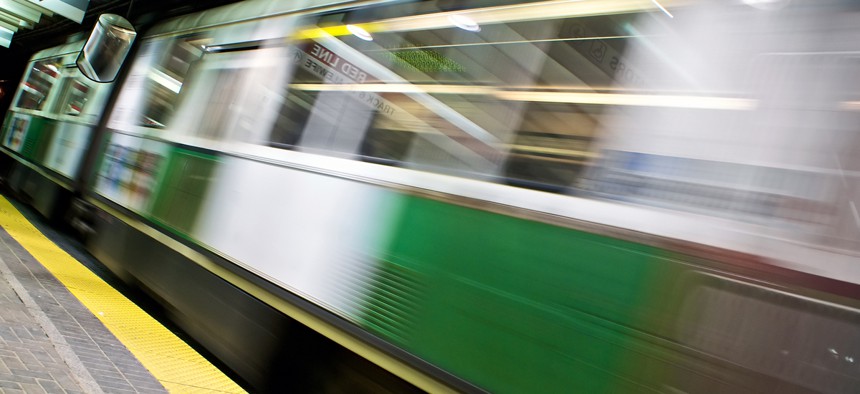In and Around Boston, the Green Line Gets Many Green Lights

A MBTA trolley moves through the Green Line subway in Boston. Shutterstock
The MBTA’s new GLX project will connect to America’s oldest subway line and surface corridors seeing major investments in transit-priority signals. Here’s what’s underway.
The Massachusetts Bay Transportation Authority will get $225 million in federal grant money for the long-planned Green Line Extension, a project in the Boston area that will bring light-rail transit service to Somerville and Medford.
It’s the second installment of federal funding for the 4.7-mile-long GLX project, which will include seven new stations on two branches mostly along existing MBTA commuter rail right-of-way. In 2015, a full-funding grant agreement was signed that provided $996 million in federal funds toward the $2.3 billion total cost of the transit extension, which is being jointly built by MBTA and the Massachusetts Department of Transportation.
U.S. Transportation Secretary Elaine Chao was joined Monday by federal, state, and local officials in making the announcement.
“DOT is proud to partner with the Commonwealth of Massachusetts and MBTA to extend safe public transportation to the 75,000 residents who live along the Green Line extension, which will spur development and bring added value to the corridor,” FTA Acting Administrator K. Jane Williams said in a statement. “The leadership at the state and MBTA should be commended for making the necessary decisions to ensure this project opens on time and within budget.”

The project, which has faced numerous delays, is scheduled to open in 2021.
While the newly built GLX will connect Somerville and Medford with a one-seat ride into the heart of Boston, it will do so via the nation’s oldest subway line, which opened in 1897 under congested Tremont Street. But once Green Line trolleys emerge from the subway to the surface, they have, until recently, lacked traffic signal priority while traveling along heavily-trafficked thoroughfares like Beacon Street, Commonwealth Avenue and Huntington Avenue.
Last fall, the MBTA announced that successful traffic-signal pilot projects that prioritize Green Line trolleys and local buses moving through intersections would be expanded along those corridors, plus Massachusetts Avenue in Cambridge.
Data collected during this pilot phase showed these bus routes and Green Line trolleys given traffic signal priority, proceeding through green lights with extended times, and red-light times reduced to allow buses and trolleys to proceed faster through an intersection, which translated into a faster commute for MBTA passengers. Coupled with the positive effects seen for these routes, there was also no demonstrably negative effect on the mixed vehicle traffic in which these bus routes and trolleys operated with no traffic signal-related complaints received during the time of the pilot.
The MBTA has worked with municipal partners to roll out these and other projects, like bus-only lanes. Speeding up bus service has been a major priority for Boston City Hall, where Mayor Marty Walsh’s administration has budgeted more staff resources to roll out more traffic signal priority and bus lane projects.
PREVIOUSLY on Route Fifty:
Michael Grass is Executive Editor of Government Executive’s Route Fifty and is based in Seattle.
NEXT STORY: Taking on cloud migration risks






